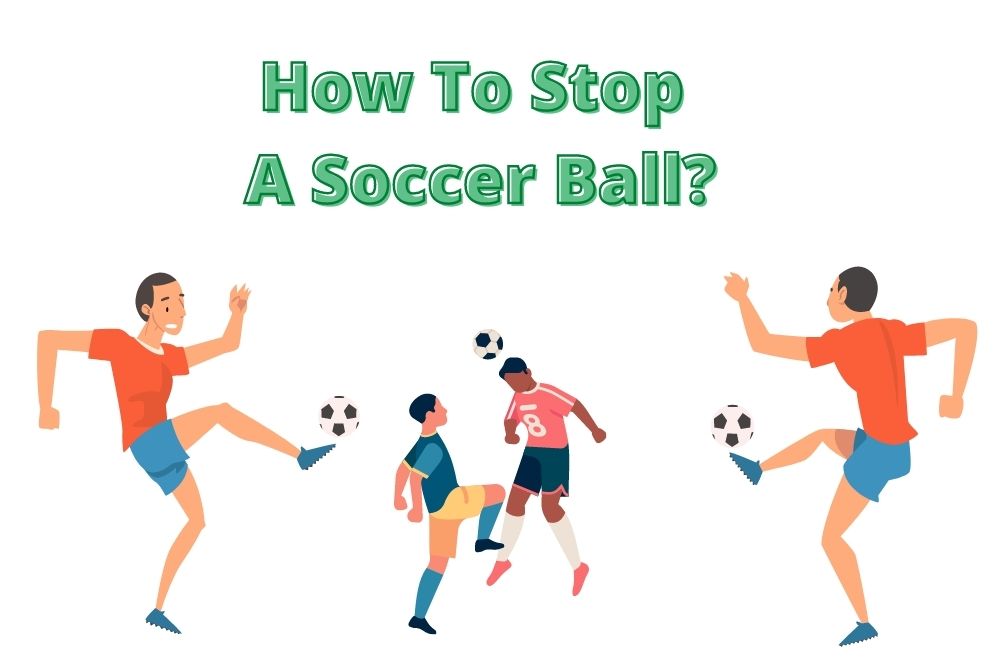The act of stopping a soccer ball, otherwise known as trapping, might look easy for anyone to do, however, it isn’t.
Trapping a ball would mean the ball is already in motion coming towards you. A fast-moving ball can be dangerous if not properly controlled; add a spin to it, and you’re probably thinking of getting out of its way.
The whole structure of the play in soccer is getting the ball to move towards the opponent’s goal area to net a goal. How well and how far a ball’s movement is efficiently controlled depends greatly on the stopping and passing skill of the players.
Ball movement often takes on two main trajectories; aerial or ground level. Aerial passes are often directed at your head, chest, shoulder, and arms, while ground-level movement is aimed at the thighs and legs. It might also come in the form of short or long passes.
Since a soccer ball is round, and cleats are worn to control it, the inability to properly stop the ball might result in a loss of possession.
Stopping soccer ball movement is so important that there are recorded statistics for it, during gameplay. These are Interceptions, Blocked shots, and Saves – for goalies.
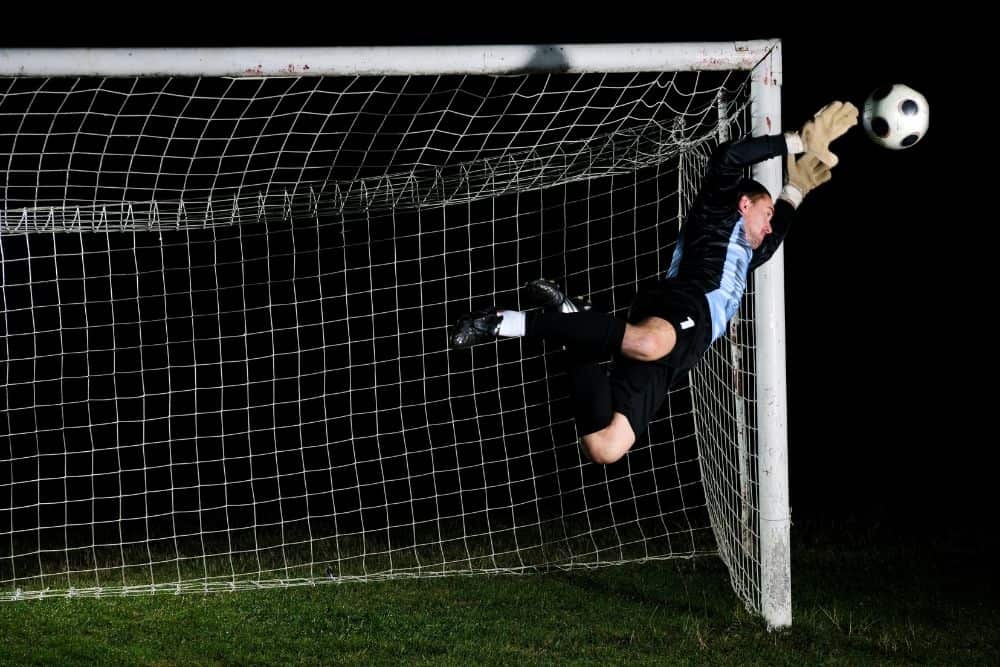
In this article, we will discuss how to use different parts of your body to stop a soccer ball.
Quick Navigation
How To Stop A Soccer Ball?
There are several ways to stop a soccer ball as a professional soccer player. This would largely depend on the position of the ball and its speed at that time. Sometimes, the ball can come at a higher level above the ground or it can be on a ground level.
If the ball is at ground level, you can simply step on the ball with one of your legs or through the side of your foot. Most players use the latter to stop a ball especially when the opponent is close. While most players use the former to stop a ball when the opponent is far off.
Another way is using your thighs to stop the ball at a slightly elevated ground level. This is when the ball is directed below your chest level and above your legs. It takes a whole lot of skill to effectively control the ball in this manner.
Trapping the ball with the chest at a higher level takes a good amount of skill and control; one that can only be found in an exceptional player.
When effectively stopped with the chest and controlled, the player makes a decision to either let it roll down towards his feet and play a shot away from his goal area towards that of his opponent.
Balls in motion are also stopped with the head. This happens during an aerial play and only the head can make contact with the ball.
This might require the player to jump so his head can touch the ball, then he controls it to the ground. By the rules of soccer, a player is allowed to touch the ball with the head.
Talking about the rules of soccer, players are not allowed to touch the ball with their hands. The goalie is the only player on the field of play that’s officially allowed to use the hands to touch and stop the ball (although certain conditions apply).
There are instances, although not permitted by the Laws of the Game, where soccer players use their hands, as last resort, to stop the ball. The match official would decide the severity of that offense and award appropriate sanction/punishment.
Let’s take an in-depth look at how a soccer ball can be effectively stopped by different parts of a player’s body.
How to stop the ball with your chest?
When you see soccer players stop the ball with their chest, it is an amazing sight to behold but a bit tricky. Here are various methods to adopt when attempting to stop a soccer ball with your chest.
Method 1: Stop the ball with the middle of your chest or a location near to it
The chest is located close to the hands and if not properly controlled can result in contact with the hands. When attempting to stop a moving ball with the chest, position the chest in such a way that the ball sits right at the center of it or somewhere close to the center.
The chest has a somewhat leveled area that can be taken advantage of. By letting the ball fall within this area, you will have better ease of control of the ball.
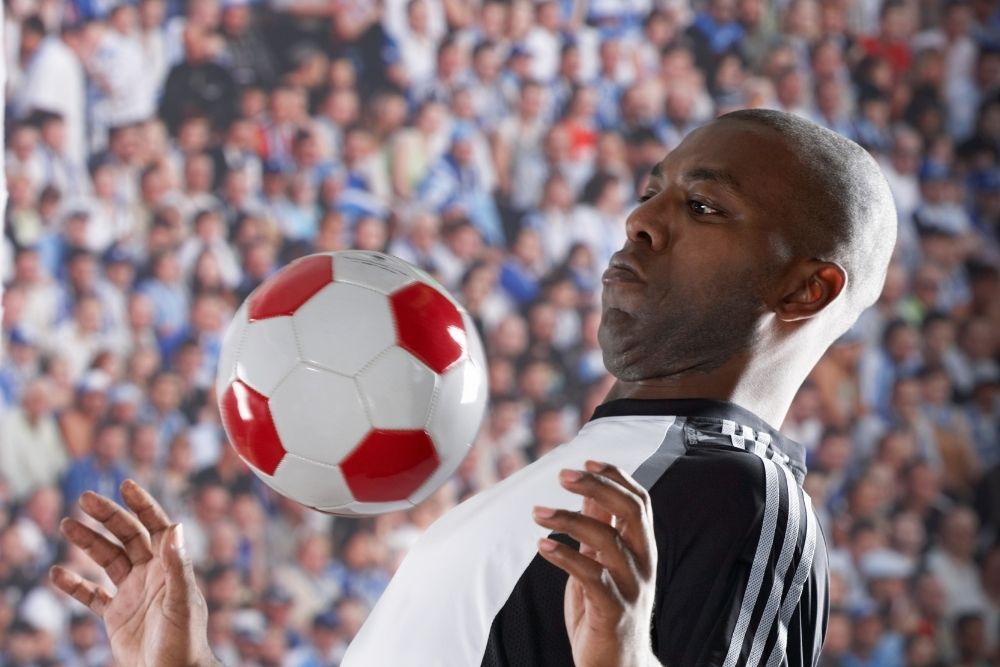
Method 2: Step back a little to lessen the impact of the ball
Flexibility is key when stopping a ball with your chest and it also applies to other parts of the body. Make a quick study of the ball’s motion and ensure it’s within a range that can conveniently get to you.
Here’s the tricky part: at a faster speed, standing motionless may cause the ball to bounce off your chest.
To prevent this from happening, it’s necessary to step back a little as the ball approaches your chest. Just before the ball makes contact with your chest, tilt your body backward a bit to position your chest to act as a trap.
You don’t want to look like an amateur and let the ball bounce off as a result of being unable to use your chest properly. Although it might not be easy for a start, with time, you’ll get a hang of it. You’ll handle a ball with your chest like a pro.
Method 3: Guide the ball in the area you want it to go
This step requires some expertise, but with constant practice, it’ll soon become a piece of cake. Players are constantly on the move on a soccer pitch trying to get the ball. For this reason, it’s common to have an opponent charging towards you as the ball approaches you.
This can be done alone or in combination with the other steps above. As the ball approaches, look out for the position of your closest teammates and decide on who it’s safest to pass the ball to. Do this move wrongly and you’re sure to lose possession of the ball to your opponent.
For instance, if the ball approaches your chest and your opponent is on your right, it’s wiser to move your chest, immediately the ball makes contact with it, to the left.
With this move, you would have successfully used your chest to deceive the opponent, if you have a teammate waiting on your left-hand side.
Method 4: If the ball is above your chest, jump
Like I mentioned in the second step above, flexibility is key as far as stopping the ball with your chest is concerned. Therefore, in case the ball is a little bit above the reach of your chest, you can jump and apply the methods described in the steps above.
How to stop the ball with your head?
This situation only occurs when a ball is high above your chest level. It would be unwise to give up the tackle and allow the ball to pass you by. In such a situation, it’s best to try to stop the ball with your head.
The head is one of the most used body parts in soccer, after the legs. Defending players use it to remove attacking balls from the goal area while offending players use it to attempt a goal or make passes to other teammates.
Whatever the case, here are good methods to effectively use the head to stop a soccer ball when in play.
Method 1: Stop the ball with the forehead
The face cannot take on a full shot of a moving soccer ball because of the eyes and nose. You could also end up with a broken tooth and cut lips. The forehead, because of its bony structure, can take a harder hit than anywhere else on the face.
It’s better to use your forehead when attempting to stop the ball so that its force won’t harm your face. Due to the leveled surface of the forehead, it can stop the ball adequately.
Method 2: Step your head backward to stop the ball
The same way you stepped backward to stop the ball with your chest is the same way you’ll go about using your head.
Keeping your head stationary can not only cause injury but might cause the play to bounce off without a determined direction. Tilt the head backward for better control and trapping of the ball.
You could also use a combination of your head and chest to stop a soccer ball. The combination can be used to stop and control a fast-moving ball.
Either let the ball make contact with your chest first, directing it slightly upwards towards your forehead or you use your forehead to make first contact and control the ball impact to safely land on your chest.
Whichever variation of the combination you choose, the goal is to reduce the speed of the traveling ball towards you. You can do this by also first stepping back to allow for ease of control. The reason for this method is that sometimes the ball might bounce off at just one touch, so applying the second touch will put the ball in control.
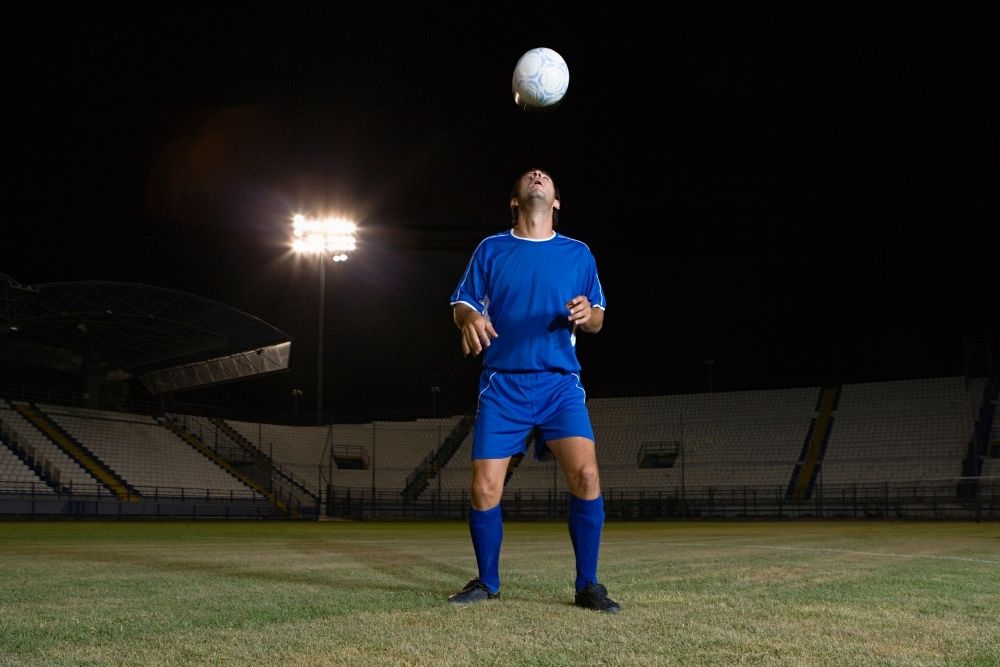
How to stop the ball with your foot?
With the way the human foot is designed, especially with how it sits in soccer cleats, it can be used to efficiently stop a soccer ball in motion. Here are some ways to achieve this.
Method 1: Use the sole of your foot
This method is otherwise referred to as ‘step trap’. It’s quite the simplest method to stop a soccer ball. Anyone aspiring to be a soccer player can start with this method.
A step trap is successfully achieved by stepping on a moving ball to stop it. The cleat studs help to cause friction between your foot sole and the ball, stopping its movement. However, this comes with its conditions.
To perform this activity, the ball has to be on a ground level and moving towards you. This can be in the form of a pass from your teammates or an interception from the opponent’s gameplay.
Once the ball has gotten closer to your feet, all you have to do is to use one foot to step on the ball to halt its movement.
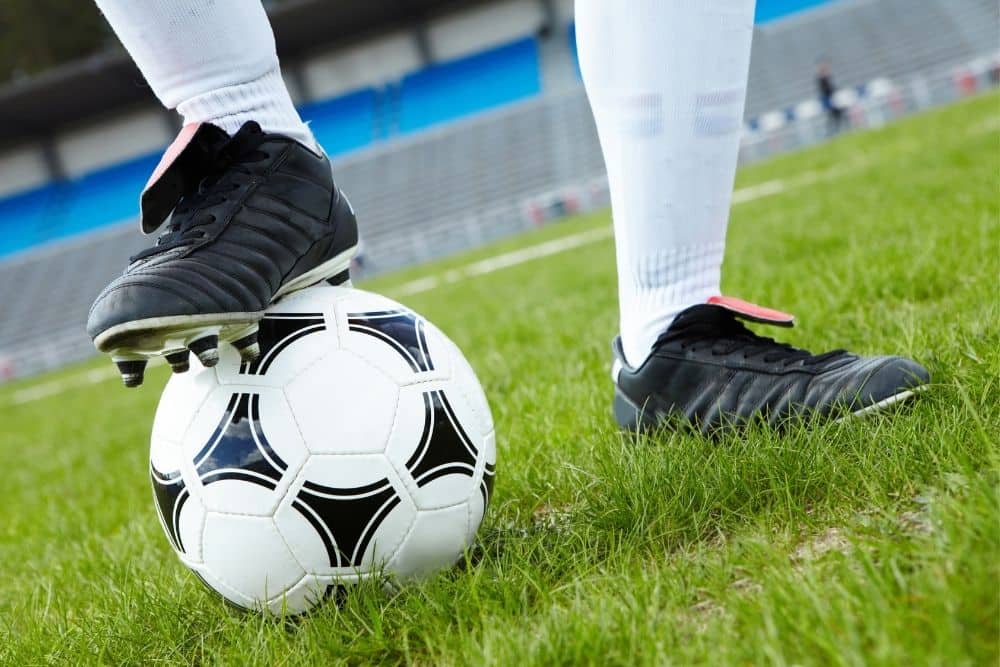
Method 2: Use the side of your foot
Once you’ve mastered the art of stopping the ball with the sole of your foot, you can try to use the side of your foot. Any ball on a ground level directed towards you can be stopped with this method.
You’ll find most professional soccer players adopting this method because it helps them to guide the ball easily with one touch. You can also use the inner side of your foot but it must be done tactically to avoid a bounce off.
When the ball approaches you, step your foot slightly backward to reduce its speed, then you can use the second touch to direct the ball. Moreover, you can turn the side of your foot towards your desired direction before the ball approaches you.
When the ball approaches your feet from the outside, you can use this area to stop the ball the same way you did with the inside part.
The outside part of the cleat, if done properly, can be used to effect a dribble. Tap the approaching ball to stop it and use the resulting bounce to direct the ball to a direction entirely different from what the opposition player is expecting.
Using the sides of your foot to stop balls will require great skill that can be honed during training sessions. The best dribblers are known to effectively use the sides of their feet.
Method 3: Use the bridge of your foot
This is what most professionals use to show off their ball-stopping skills in the air. However, the ball must be in between the thighs and foot for this to happen. Using the bridge of your foot to stop the ball helps to juggle it towards the direction one desires.
This method is perfected during training sessions or when on the run towards the opponent. It is the reason why only professional soccer players can do this effectively or else they will lose possession of the ball.
How to stop the ball with your thighs?
This method is applicable when the ball is between your chest and knees level. You can stop the ball with your thighs, however, your leg must slightly step backward so that the ball won’t bounce off in another direction.
There are circumstances where the ball can be slightly above your thighs; jumping to stop the ball at this point will be a wise option. Your standing position might make stopping the ball with your thighs easy or difficult, especially when you’re looking to not only stop the ball but have it under control.
Identifying the right thigh to use when a ball is directed towards you can determine whether you’ll be able to stop the ball or not. A player’s thighs, just like the legs, have one that’s more dominating and can effectively control the ball unlike the other – unless the player is ambidextrous.
The thighs can be used to stop a soccer ball in its path to regain possession. What a player decides to do with the intercepted ball is beyond the scope of the article. The Laws of the Game of soccer allows its players to have contact with the ball with the thighs.
How to stop the ball with your hands?
This is effective for the goalie, who is the only player allowed to touch the ball with the hand. Goalies wear protective gloves to reduce the shot power of fast-paced soccer balls. Here are some methods to stop a soccer ball as a goalie.
Method 1: Scoop the ball
This method is effective for ground-level, slow-paced balls. Position your body to align properly with the goal. Drop your elbows, allowing your palm and fingers to touch the ground. Use your palm and fingers as a ramp to guide the slow-paced ball into your hand.
Method 2: Collapse forward on the ball
As a goalie that’s not in the mood to take chances, here’s an excellent way to safeguard your goal post. It doesn’t matter the speed of the ball, after observing that your immediate surrounding is safe for a dive, collapse forward towards the approaching ball.
Your collapsed body will act as a pocket to hold the ball while your hands hold on to the ball firmly. Do this effectively to avoid causing pain and injury to your abdomen.
Method 3: Cup the ball in the air
This works best during aerial plays when the back is played towards you. Jump as far as your body can allow, with your hands stretched out but with little space between them to allow for ball passage.
With the help of your fingers, guide the stopped balls into your palm while bringing the entire ball into your chest or stomach area.
Sometimes outfield players use their hands to stop the ball cunningly or unintentionally. They do this deliberately when it’s obvious the opponent would score a goal and see it as the only option to impede the ball’s movement and gain an advantage. However, once they’re caught, they get penalized because only goalies are supposed to stop the ball with their hands.
There are also moments where a player might cunningly stop a ball with his hands and quickly control it with his foot to avoid suspicions.
Sometimes, some of these players have become successful with this illegal activity that has led to a goal against the opponent. However, once caught, the goal will be nullified.
A worthy example of a soccer outfield player using his hand to not only stop a moving ball but gain an advantageous goal is Argentinian Maradona’s Hand of God goal in the 1986 FIFA World Cup Quarterfinal game against England.
When a player unintentionally stops the ball with his hands, he won’t be penalized and the game will continue. This can be through a shot from the opponent or via free-kicks and corner-kicks.
The Laws of the Game stipulate that a foul is not committed if the ball touches the shoulders of the player. This in no way means you should go about abusing the law. In the spirit of fair play and sportsmanship, hands should not be used to stop a soccer ball.
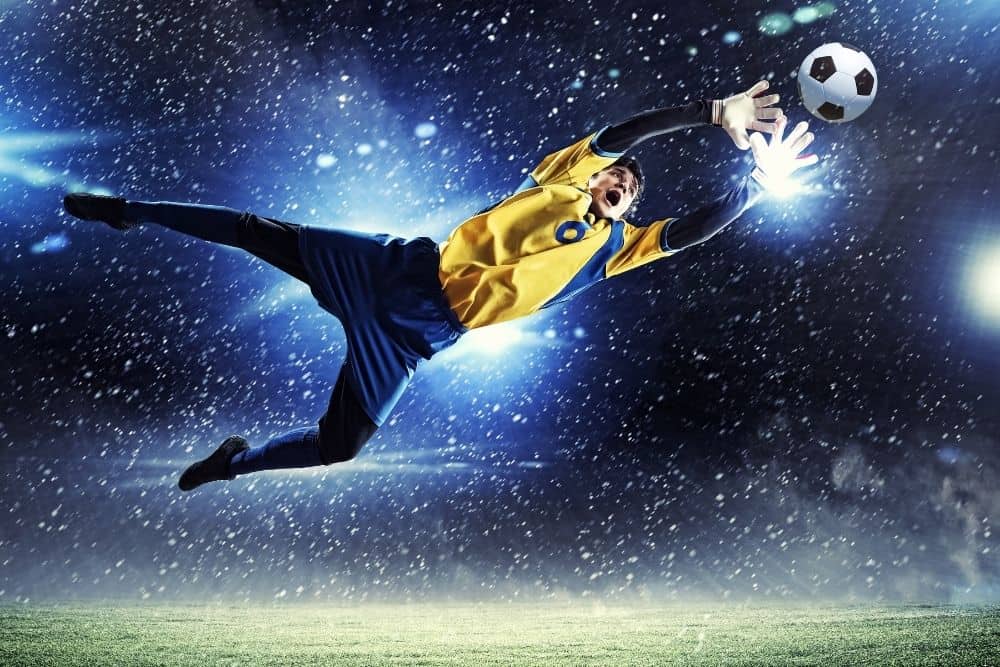
Conclusion
There are several available methods a player can use in stopping a ball with different parts of his body. Although they can be quite tricky, when practiced, can be achieved with ease.
One of the ways to control the game in soccer is to ensure your team has most of the ball possession. For this reason, intercepting opposition passes is as vital as making accurate passes to your teammates.
Hi there, I’m Jay.
Soccer is everything in my life! My friends and I have created this blog with all our enthusiasm, passion, and understanding after years of playing pro soccer. Hope you will enjoy it!
